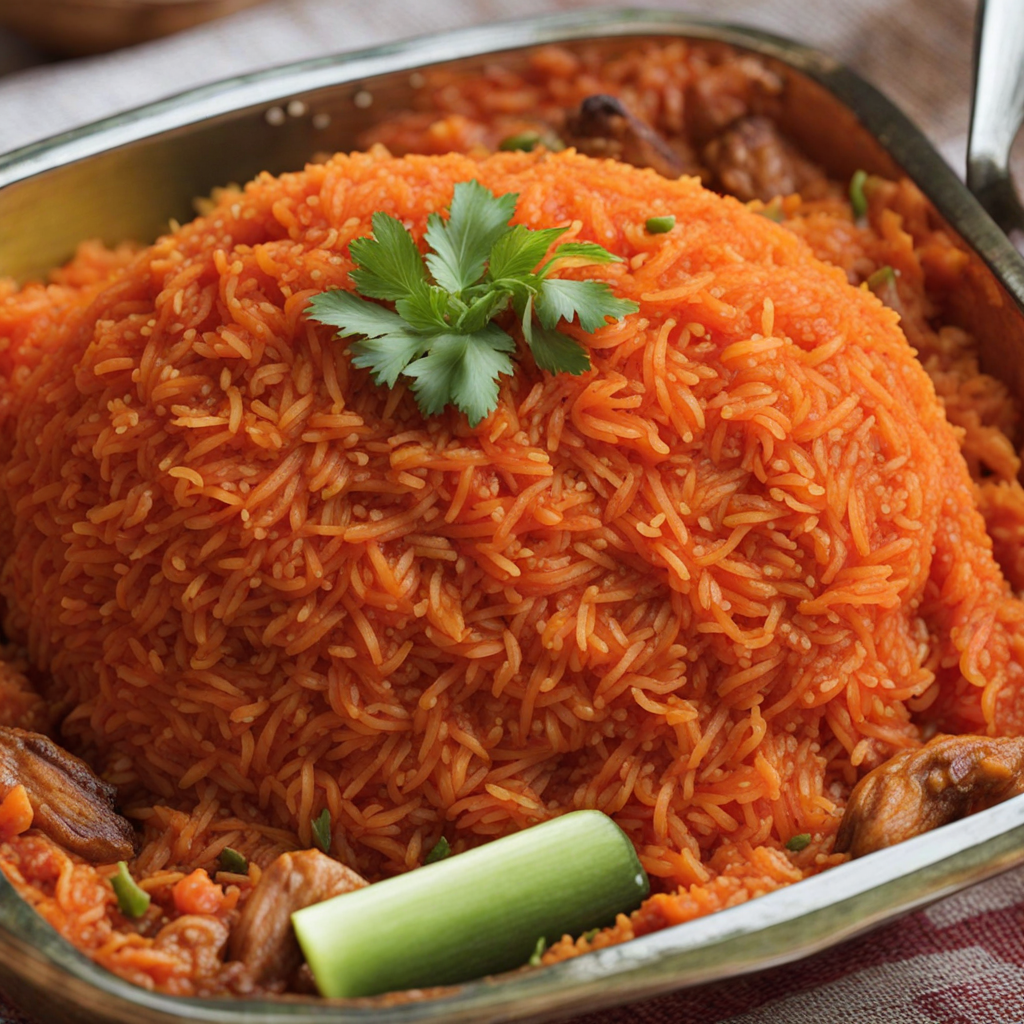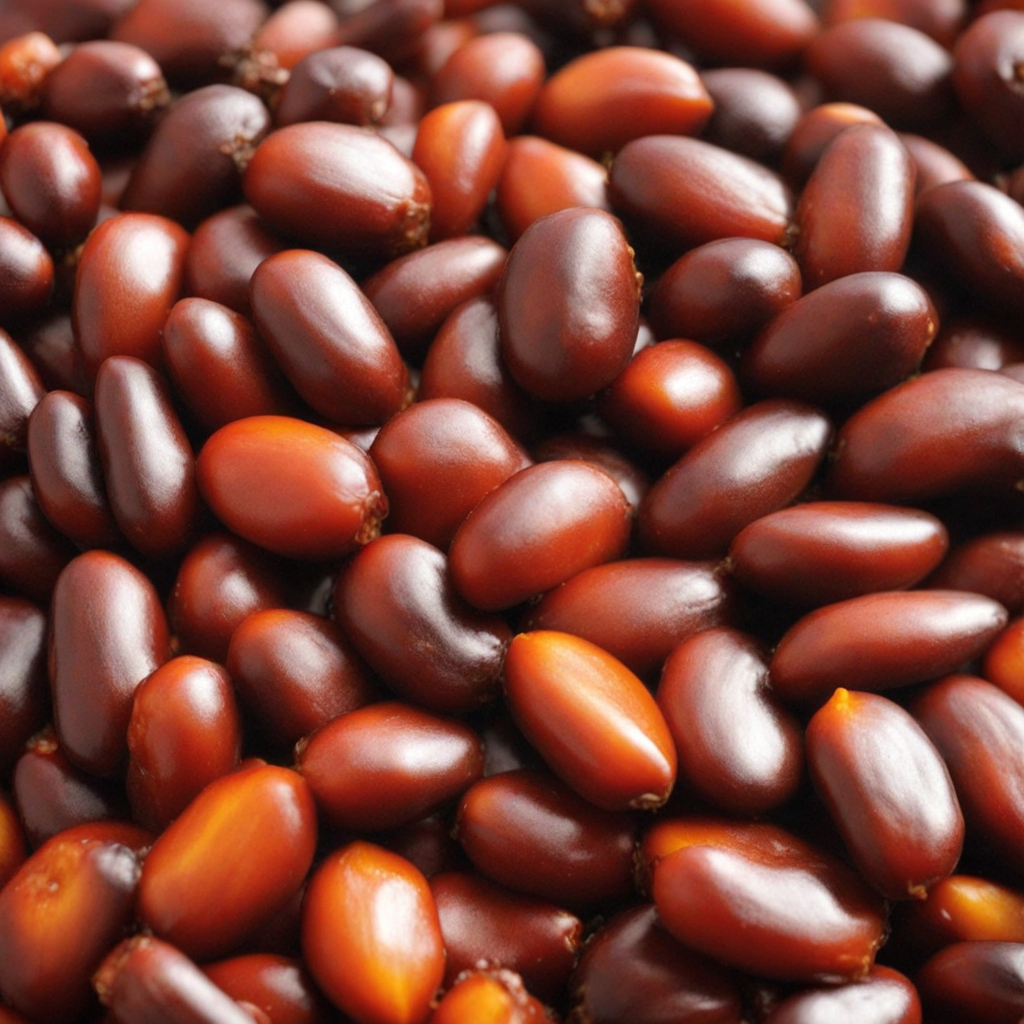Piri Piri Chicken
Piri Piri Chicken from Guinea-Bissau is a delightful culinary experience that showcases the vibrant flavors of West African cuisine. This dish features succulent chicken marinated in a zesty blend of spices, including the famous Piri Piri chili, which infuses the meat with a fiery kick. The marinade typically includes garlic, lemon juice, and a variety of aromatic spices, creating a perfect balance of heat and tanginess that tantalizes the taste buds. Once marinated, the chicken is usually grilled or roasted to perfection, resulting in a smoky flavor that complements its spicy undertones. The preparation of Piri Piri Chicken is often a communal affair, reflecting the cultural significance of food in Guinea-Bissau. It is common to see families and friends gather around the grill, sharing laughter and stories while the chicken cooks to a golden brown. This dish is frequently served with a side of rice or traditional cassava, allowing diners to soak up the flavorful juices. Fresh vegetables or a simple salad often accompany the meal, adding a refreshing contrast to the savory richness of the chicken. When you take your first bite of Piri Piri Chicken, you'll experience a symphony of flavors that dance on your palate. The initial heat from the Piri Piri chili is followed by the aromatic essence of garlic and herbs, making each mouthful a delightful adventure. The juicy, tender chicken provides a satisfying texture, while the smoky char from grilling adds depth to the overall flavor profile. For those seeking to explore the tastes of Guinea-Bissau, Piri Piri Chicken is not just a meal; it's a celebration of bold flavors and communal dining that invites you to savor the essence of West African culture.
How It Became This Dish
Frango Piri Piri: A Culinary Journey Through Guinea-Bissau Frango Piri Piri, a dish that tantalizes the taste buds with its vibrant flavors and spicy heat, is deeply rooted in the cultural tapestry of Guinea-Bissau. This dish, primarily consisting of grilled chicken marinated in a fiery piri piri sauce, reflects a fascinating blend of indigenous ingredients, colonial influences, and the rich traditions of West African cuisine. Understanding its origins and cultural significance offers a glimpse into the heritage of Guinea-Bissau, a nation often overshadowed by its neighbors but rich in culinary diversity. #### Origins of Frango Piri Piri The term "piri piri" itself is derived from the Swahili word for "pepper," which highlights the African influence on this dish. The origins of Frango Piri Piri can be traced back to the Portuguese colonial era in Africa, particularly in the 15th century. As Portuguese explorers ventured into the African continent, they encountered various cultures, spices, and cooking techniques, which they gradually assimilated into their culinary practices. The key ingredient in Frango Piri Piri is the African bird's eye chili, known locally as "piri piri." This small but potent chili pepper is native to the region and has been used by local communities for centuries, not only for its flavor but also for its medicinal properties. The combination of the chili with local herbs, garlic, and citrus elements creates a marinade that is truly reflective of the vibrant culinary heritage of Guinea-Bissau. While the Portuguese introduced the technique of marinating and grilling chicken, the dish quickly evolved into a local specialty, as the indigenous communities began to incorporate their own ingredients and cooking styles. This fusion resulted in a dish that was not only a testament to colonial influences but also an expression of local identity. #### Cultural Significance Frango Piri Piri holds a special place in the hearts of the Bissau-Guinean people. Food in Guinea-Bissau is more than just sustenance; it embodies community, tradition, and celebration. The preparation and sharing of meals often bring families and friends together, reinforcing social bonds and cultural heritage. Frango Piri Piri is typically served during festive occasions, family gatherings, and communal celebrations, serving as a centerpiece that reflects the warmth and hospitality of the Bissau-Guinean culture. In addition to its role in social events, Frango Piri Piri is also a culinary symbol of resistance and resilience. The history of Guinea-Bissau is marked by struggles for independence and identity, particularly during the liberation war against Portuguese colonial rule in the 20th century. The embrace of local dishes like Frango Piri Piri became a way for the people to assert their cultural identity and heritage, celebrating the flavors of their homeland amidst the challenges they faced. #### Development Over Time As Guinea-Bissau gained independence in 1973, the culinary landscape began to reflect a new sense of national pride and identity. Frango Piri Piri, while rooted in its colonial past, evolved into a symbol of the nation’s unique cultural identity. Chefs and home cooks alike began experimenting with the dish, adding regional twists and incorporating locally sourced ingredients such as palm oil, peanuts, and cassava. The development of Frango Piri Piri also mirrored broader global trends in cuisine. As the world became more interconnected, the dish began to attract attention beyond Guinea-Bissau. The global fascination with spicy foods and the rise of African cuisine in the culinary world led to a renewed interest in Frango Piri Piri, with chefs and food enthusiasts seeking authentic recipes and experiences. In the late 20th and early 21st centuries, the diaspora communities from Guinea-Bissau spread across Europe, particularly in Portugal and the UK, where they introduced Frango Piri Piri to a wider audience. Portuguese restaurants began to feature this dish prominently, drawing on both traditional recipes and contemporary culinary techniques. The dish's popularity soared, leading to a fusion with other global cuisines, where it was paired with various sides, sauces, and accompaniments, showcasing its versatility. #### The Modern Era Today, Frango Piri Piri is celebrated both as a traditional dish and as a modern culinary delight. Restaurants across Guinea-Bissau, as well as international eateries, offer their own interpretations of the dish, often incorporating local ingredients and contemporary cooking methods. Grilled chicken served with a spicy piri piri sauce has become a beloved dish, not only in Guinea-Bissau but also in neighboring countries and beyond. Furthermore, the dish plays a vital role in promoting Guinea-Bissau's culinary tourism. As awareness of African cuisine continues to grow, tourists are increasingly drawn to Guinea-Bissau to experience its rich culinary heritage firsthand. Frango Piri Piri is often highlighted in culinary tours, food festivals, and cultural events, allowing travelers to appreciate the historical significance and cultural context of this beloved dish. #### Conclusion Frango Piri Piri is more than just a meal; it is a narrative of Guinea-Bissau's history, culture, and identity. From its colonial roots to its evolution as a symbol of resilience and pride, the dish encapsulates the spirit of the Bissau-Guinean people. As it continues to adapt and thrive in the modern culinary landscape, Frango Piri Piri remains a vibrant reflection of the nation’s rich heritage and serves as a delicious reminder of the intricate connections between food, culture, and identity. As you savor each spicy bite, you participate in a story that spans centuries, cultures, and communities, celebrating the enduring legacy of Frango Piri Piri in Guinea-Bissau.
You may like
Discover local flavors from Guinea-bissau







